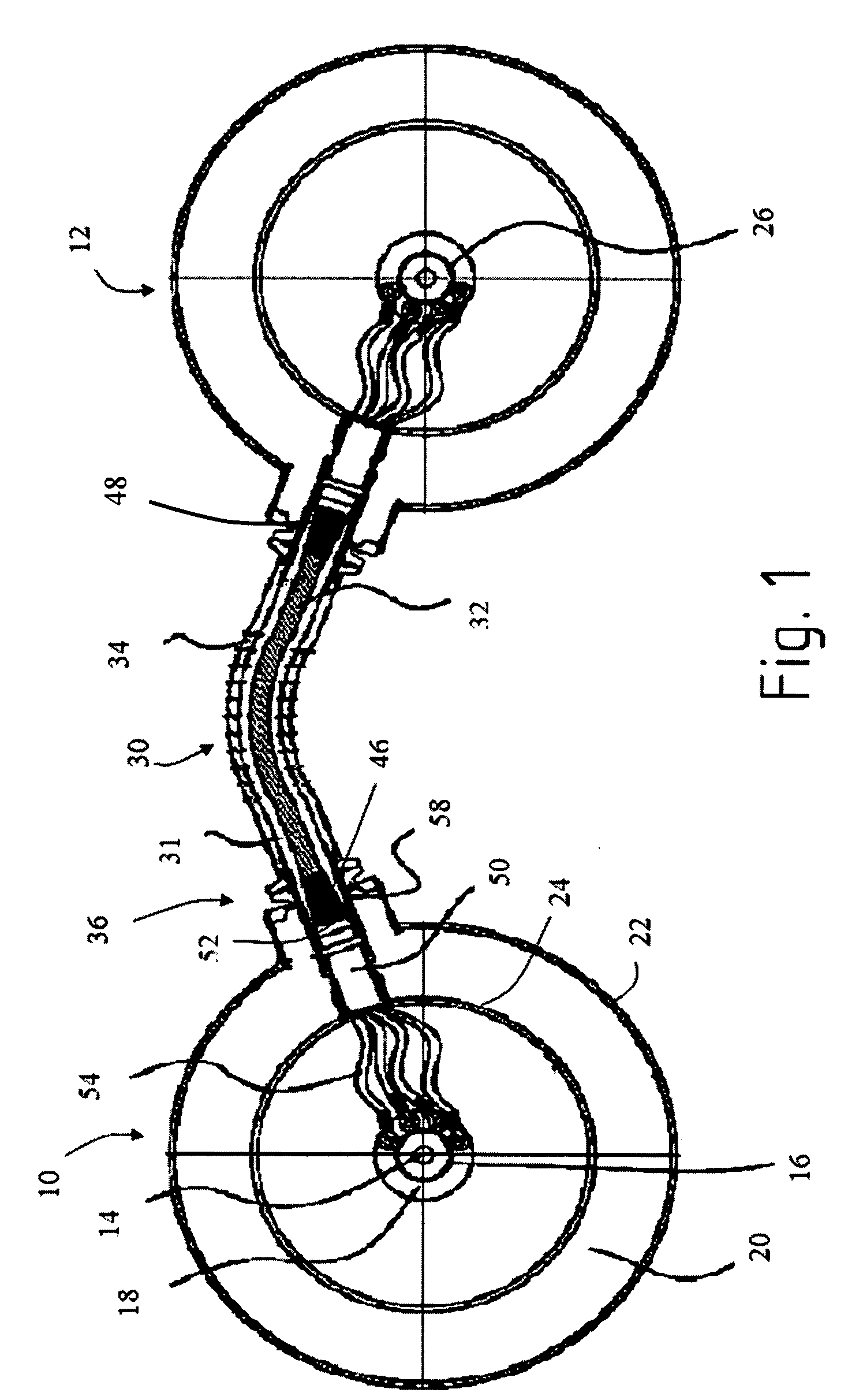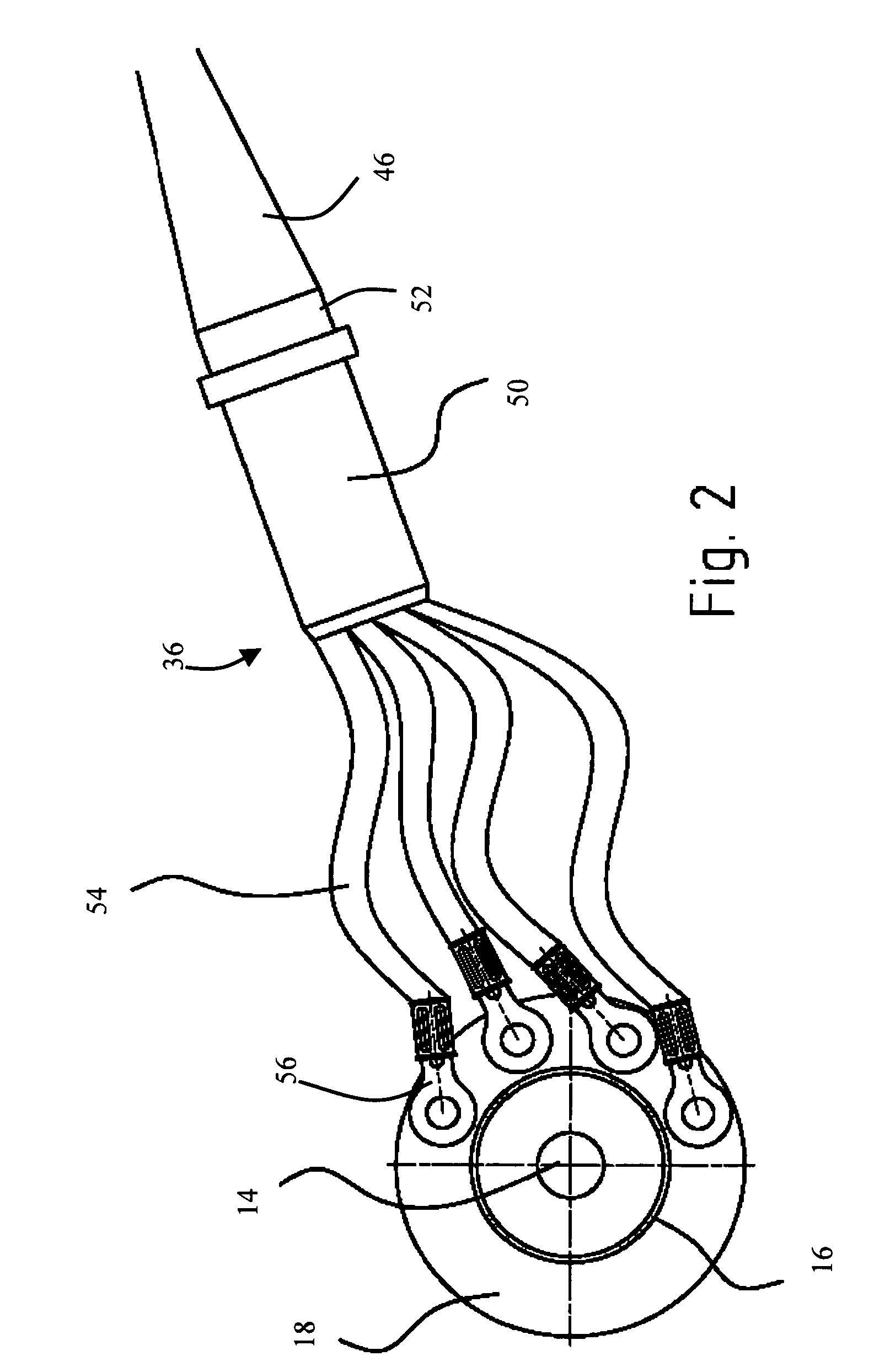Connection arrangement for superconductor cable shields
a superconductor cable and connection arrangement technology, applied in the direction of electrically conductive connections, superconducting magnets/coils, magnetic materials, etc., can solve the problems of not being able to envisage connecting the shield directly to the earth, increasing the quantity of cryogenic fluid consumed for cooling the superconductor, and affecting the overall electrical efficiency of the installation
- Summary
- Abstract
- Description
- Claims
- Application Information
AI Technical Summary
Benefits of technology
Problems solved by technology
Method used
Image
Examples
first embodiment
[0028] In a first embodiment, cooling is provided by thermal conduction along the connection piece 50 and the support 40 of the link superconductor 32. The cryogenic fluid contained in the cryostat 20 does not pass into the cryogenic sheath 34. It is then necessary to provide sealing between the cryostat 20 and the sheath 34. This sealing may be made by clamping the connection piece 50 against the inside wall 24 of the cryostat 20, or by clamping between the male and female portions of the coupling 58.
second embodiment
[0029] In a second embodiment, the link superconductor 32 is cooled by direct contact with the cryogenic fluid of the cryostat 20. Under such circumstances, the connection part 50 does not need to be fastened in leaktight manner and passages may be provided through said connection piece so as to allow the cryogenic fluid of the cryostat 20 to pass into the space 31 between the cryogenic sheath 34 and the link superconductor 32.
[0030] In this second embodiment, it may be observed that the link superconductor 32 is also cooled in part by thermal conduction. This makes it possible, particularly if the flow rate of cryogenic fluid through the connection piece 50 is limited, to supplement the direct cooling by convection of the cryogenic fluid against the link superconductor with the thermal conduction along the support 40 and the connection means 36.
[0031] The various ways in which the connection piece 50 is connected to the junction element 18, as described with reference to FIGS. 1, ...
PUM
 Login to View More
Login to View More Abstract
Description
Claims
Application Information
 Login to View More
Login to View More - R&D
- Intellectual Property
- Life Sciences
- Materials
- Tech Scout
- Unparalleled Data Quality
- Higher Quality Content
- 60% Fewer Hallucinations
Browse by: Latest US Patents, China's latest patents, Technical Efficacy Thesaurus, Application Domain, Technology Topic, Popular Technical Reports.
© 2025 PatSnap. All rights reserved.Legal|Privacy policy|Modern Slavery Act Transparency Statement|Sitemap|About US| Contact US: help@patsnap.com



